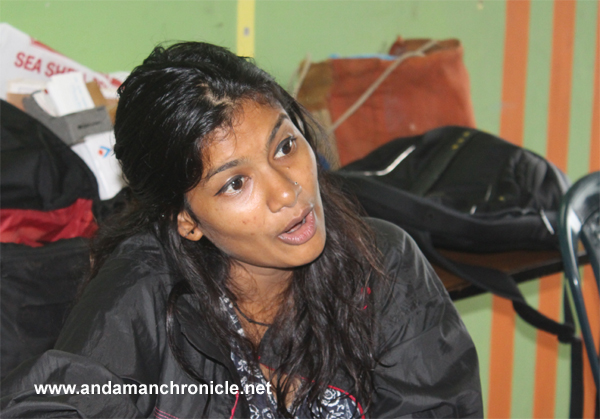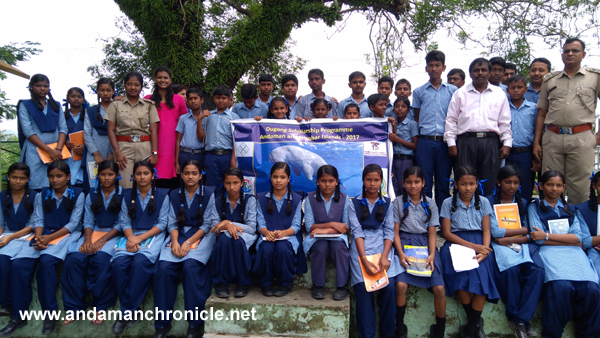WII and CAMPA In Association with Forest Deptt. To Conserve Dwindling Population



Port Blair, July 21: As per current estimates the population of dugongs (the state animal of the Andaman and Nicobar Islands) is somewhere between 20-25. The Wildlife Institute of India and CAMPA in collaboration with the Forest Department have launched a new project to survey, map and conserve the dwindling population of dugongs left in the islands. Swapnali Gole, a marine biologist who will be working on the project spoke at length to Andaman Chronicle and said that the Tsunami greatly depleted the population of dugongs in the Islands.
“Dugongs are marine herbivores. A large part of their diet consists of sea grass. All plants need sunlight for photosynthesis and so sea grass only grows at very shallow depths. The 2004 Tsunami adversely affected the growth of sea grass which in turn lead to the decline of dugong populations.”
Accidental entanglement in a fishermen’s net is another major cause of dugong deaths. According to Gole “dugongs are mammals just like whales or dolphins. They need to re-surface every five or six minutes to take a breath. A dugong that gets entangled even for a shot while can suffocate and die. Moreover dugongs give birth only after a gap of 3-7 years. For the first one or two years of its life, a baby dugong is dependent on its mother for parental care. Thus if a mother dugong dies it seriously endangers the baby. In fact my co-peer on this project, Mr. Himanshu Das had visited Onges in Hut Bay in 1996 and observed that even though they hunted dugongs they observed certain conservation ethics. They would never hunt an adult dugong if it was accompanied by its baby because they knew that the baby relied on its mother for protection.”
Gole also emphasized that the project was one of many firsts for India. “This project which will last four years has been allocated a budget of Rs.23 crores. In most Western countries, aerial surveys are a must but aerial surveys are expensive. For the first time in India, with this project we plan to do aerial surveys for a marine animal with the assistance of the Coast Guard and Indian Navy.”
So far researchers in India have relied only on boat surveys and interviews with local informants such as fishermen to estimate the numbers of any marine animal. But there are several constraints on boat surveys conducted in any place and more so in Andaman and Nicobar. Boats cannot be taken out during rough weather. Major dugong population sites here are Mayabunder, Diglipur, Havelock, Neill Island, Hut Bay and Central Nicobar. Because many dugong sites have crocodiles it becomes difficult or even impossible for divers or boat surveyors to go there. Aerial surveys also have a much larger field of vision than boats. Thus through aerial surveys, Swapnili and her colleagues will be able to count the numbers of many other marine animals though the project’s core focus will be on dugongs.
There are many aspects of the dugong’s life that are right now a complete mystery to us. Gole reckons that the new project may go a long way in answering some of the questions that have so far not been answered.
“Although through the works of Elrika D’Souza we know that dugongs have feeding sites they return to, we do not yet know if they migrate and if so what their migration patterns are like. This is because individual researchers have only intermittently studied dugongs. So in the current literature there is sometimes a gap of two to three years. By doing a continuous survey for four years we hope to find out more about the movement and habitation of dugongs. We also plan to do acoustic surveys and find out how dugongs communicate. Acoustic surveys have been commonly used by researchers from many countries to study animals like dolphins, whales etc. but so far not many acoustic surveys have been done in India and no such study of dugongs has ever been done.”
Because the project is so generously endowed and because the participation of fishermen who live off of the habitat dugongs inhabit is so crucial to the success of the project, a portion of the Rs. 23 crore budget will also be used to fund fifty scholarships for children of fishermen from two senior secondary schools – one in Neill Island and one in Havelock. The dropout rate among the children of fishermen is extremely high in Andaman and Nicobar and so it is hoped that the scholarship amount of Rs.500 per month per student will also be an added incentive for the children of fishermen to attend school regularly.
But as Gole explained, another implicit objective of the scholarship was to aid dugong conservation. “As an outsider if we go and talk to fishermen there might not be as much of an impact. So in a novel approach we have tied up with two schools where we are conducting workshops and events to educate the students about the wildlife surrounding them. The students learnt not only about dugongs but also about dolphins, corals and many other aspects of Neil and Havelock’s marine habitats in these workshops. Our hope is that these children who learn about the dugong and other creatures will go home and tell their parents or relatives who are fishermen so that next time when a dugong gets entangled, a fisherman aware of the dugong and its problems will be motivated to act fast.”